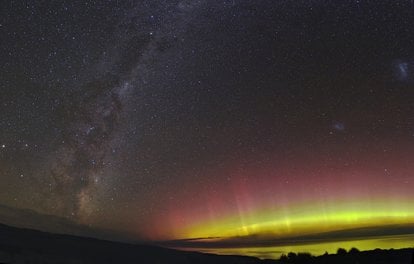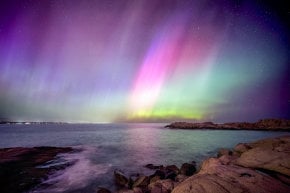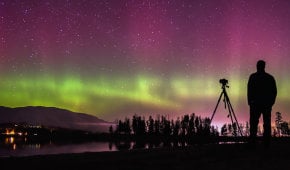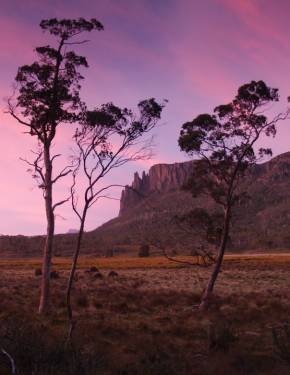Aurora Australis in New Zealand 2026
Green and pink aurora australis hues poured over the dark sky resemble a giant witch's pot with a magic potion
Best time: March–September
The South Pole is the place where the aurora australis originates, and New Zealand is the closest country, so if you head far enough south, you might just see a dance of light like no other.
Viewing Opportunities for the Southern Lights
Auroras occur when gaseous particles in the Earth’s atmosphere collide with charged particles from the sun’s atmosphere. Because these phenomena happen near the magnetic poles, getting as close to these poles as possible significantly increases your chances of seeing an aurora. Since the geomagnetic south pole is in Antarctica, it is quite distant from the nearest populated landmasses (Australia/New Zealand). Therefore, the southern lights usually need to be quite strong to be visible from populated areas.
Best Time to See the Aurora Australis
The best time to see the polar lights is during the winter season, from March to September. The most spectacular displays are typically around midnight, when the night is darkest, as the sun is shining on the opposite side of the Earth.
Best Spots to See the Aurora Australis
The South Island offers several great observatory areas to enjoy spectacular displays of multicolored southern lights. The famous aurora australis mesmerizes with its alien-like green colors mixed with pink and yellowish hues poured over the night sky of New Zealand.
The best places to see this wonderful display of nature include Stewart Island, Lake Tekapo, Aoraki / Mt Cook National Park, and the Catlins. From time to time, the natural phenomenon also occurs around Invercargill and Dunedin.
Stewart Island
Stewart Island is the southernmost Dark Sky Sanctuary in the world, providing one of the darkest locations for viewing the night sky. 85% of Stewart Island is protected as Rakiura National Park. Thanks to minimal light pollution, which is often a problem in urban areas, the island offers an unforgettable stargazing experience. Still, Aurora's activity here is not guaranteed. However, visitors who manage their expectations can still enjoy the breathtaking starry nights.
Lake Tekapo
The southern hemisphere’s counterpart to the Northern Lights, Lake Tekapo is one of New Zealand’s top spots to witness this vibrant display of color. Best viewed between April and September, Lake Tekapo is renowned for its clear nights and minimal light pollution, making it an excellent location for stargazing. For the best chance to experience this stunning natural light show, visit the Mount John Observatory, which is perched high in the mountains and faces south.
Aoraki / Mt Cook National Park
Despite Aoraki / Mount Cook having 23 peaks over 3,000 meters high, it remains highly accessible. State Highway 80 leads to Aoraki/Mt Cook Village, which is located next to the picturesque Lake Pukaki and offers a comfortable base for alpine activities. With minimal light pollution, stargazing and southern lights opportunities in this area are exceptional, as Aoraki / Mount Cook National Park encompasses most of New Zealand’s only International Dark Sky Reserve.
Catlins
Astronomers recognize the Catlins as a top spot due to its position as one of the southernmost locations on the mainland. Visitors can explore Waipapa Lighthouse, Curio Bay, and Nugget Point. Besides southern lights hunting, everyone can immerse themself in the enchanting landscape of lush hill country, where the land rises dramatically from the coast to the inland ranges, and rivers and waterfalls are abundant.


































































